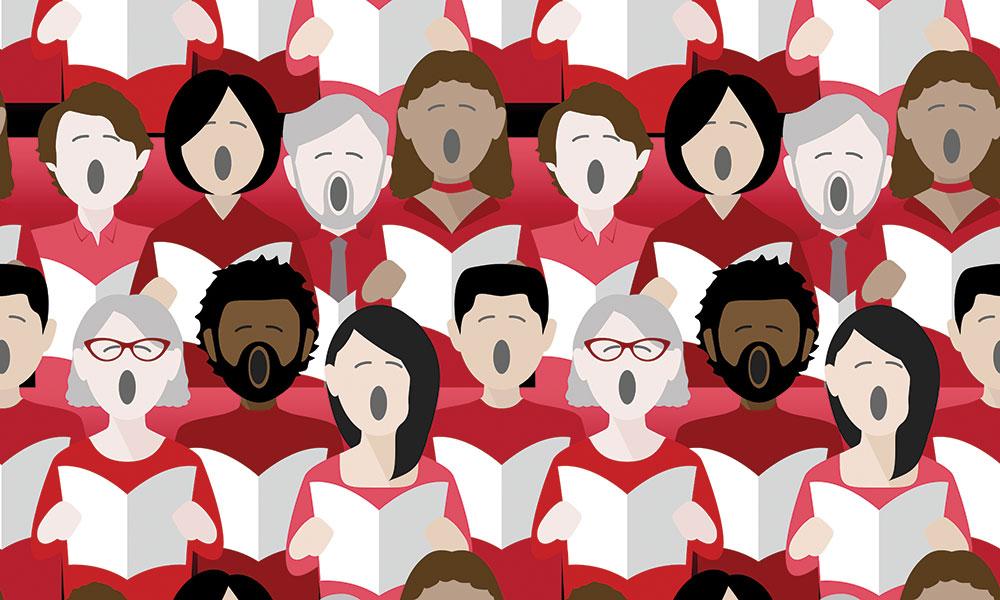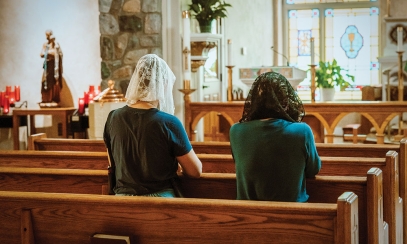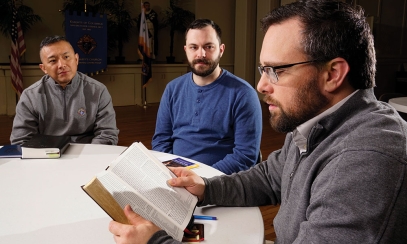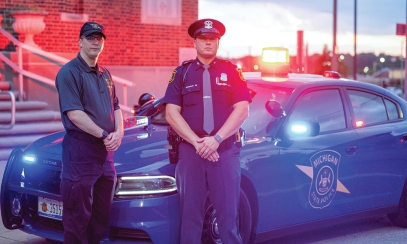
Sounds of the Season
The Hidden Stories Behind Some of Our Best-loved Christmas Carols Show the Holy Spirit at Work
The Hidden Stories Behind Some of Our Best-loved Christmas Carols Show the Holy Spirit at Work
Christmas hymns and carols are an essential part of holiday celebrations. In fact, the first Christmas hymn, “Jesus, Light of All Nations,” was penned by St. Hilary of Poitiers in 336 AD, less than a quarter century after Christianity was made legal in the Roman Empire.
Christmas hymns and carols are an essential part of holiday celebrations. In fact, the first Christmas hymn, “Jesus, Light of All Nations,” was penned by St. Hilary of Poitiers in 336 AD, less than a quarter century after Christianity was made legal in the Roman Empire.
During the Middle Ages, Christmas music was used almost exclusively in religious services. It was not until St. Francis of Assisi introduced nativity scenes to the laity (see page five) that most people began to celebrate Christmas faithfully. These festivities were accompanied with good food, merriment, and—of course—joyful songs.
Many of the carols we sing today have their roots in poetry, as many great writers had their verses set to music.
Henry Wadsworth Longfellow, who was well-known during his lifetime for works like “Hiawatha,” had endured years of tragedy and loss when the Civil War broke out. His wife had died in a fire, and he felt unable to write another word when, without warning, his oldest son ran away to enlist in the Union army and was gravely injured. On Christmas Day 1863, as his son hovered between life and death, Longfellow poured out his verses of faith and hope:
Then pealed the bells more loud and deep:
“God is not dead, nor doth He sleep;
The Wrong shall fail, the Right prevail,
With peace on earth, good-will to men.”
Noted 19th-century Boston preacher Phillips Brooks was well known for his abolitionist stance and for his sermons, both of which had gained national attention. Following the Civil War, he went to Bethlehem for respite and healing, and found himself composing a poem about the peace he found there:
“How silently, how silently, the wondrous gift is given!
So God imparts to human hearts the blessings of His heaven.
No ear may hear His coming, but in this world of sin,
Where meek souls will receive him still, the dear Christ enters in.”
These words would take on increased significance years later, when Brooks was invited to share the Gospel with Helen Keller. She told him, “I’ve always known there was a God, but until now I’ve never known his name.” It was a heart that knew the Lord, no matter how silently his gifts had been shared.
Of course, no story about Christmas carols would be complete without the most famous of them all: Silent Night.
The hymn began as a poem, written in 1816 by Austrian pastor Joseph Mohr. It was a verse that came to the rescue when the organ in Mohr’s church became flooded just before Christmas Mass. Needing something simple that could be performed easily, Mohr gave his poem to organist Franz Gruber, who set it to a gentle tune for a few voices and a guitar.
Two hundred years later, the song was so popular—and powerful—that it helped prompt a cease-fire on many European fronts during World War I. It was a song well-known and loved by both German and Allied forces, and its late-night singing in both German and English by Walter Kirchhoff, a German officer and sometime member of the Berlin Opera, helped pause fighting for a day.



